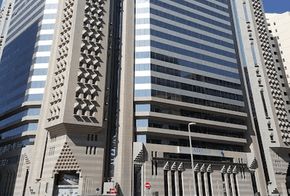- November 30, 2024
- Posted by: Velosi Author
- Categories: Insights, Software

Introduction
The oil and gas industry is highly complex and operates with great heed towards safety and optimal operational efficiency; thus, the Lifecycle Management of PSM is a framework that serves as a guiding principle. PSM lifecycle management is a comprehensive process with established sequential steps that focus on controlling hazards, assessing risks, and ensuring overall safe and compliant operations throughout the lifespan of the Oil and Gas facilities. With new standards arising progressively within the industries, Velosi has developed innovative strategies that can complement the practical implementation of PSM with solutions tailored to meet the challenges faced in the industry while enhancing safety and performance.
What is PSM Lifecycle Management?
Process Safety Management (PSM) lifecycle management is therefore a systematic approach that involves the identification of safety risks in a facility and the subsequent development of strategies to mitigate them from the time the facility is designed and built up to the time it is operational and even when it is being closed down. Adopting PSM lifecycle management is relevant to managing and eliminating hazards, meeting legal requirements, and minimizing possible operational risks.
Why PSM Lifecycle Management is Essential for the Oil and Gas Industry
The oil and gas industry is one of the most challenging and dangerous industries, and every event can lead to a critical situation from an environmental and financial point of view. These challenges are addressed in PSM lifecycle management by developing sound procedures that protect workers, communities, and assets.
This approach ensures continuous risk monitoring and offers frameworks to enhance safety practices, making PSM lifecycle management indispensable for companies committed to safety and compliance.
The Phases of PSM Lifecycle Management and Velosi’s Services
Velosi delivers some of the most effective and efficient PSM solutions for all stages of the PSM process to ensure safety and productivity.
- Hazard Identification and Risk Assessment
The first strategy of the PSM lifecycle management is called hazard identification and risk evaluation. This includes identifying risks with equipment, processes, and the environment in which the equipment is located. Velosi’s Hazard and Operability Studies
(HAZOP): Velosi undertakes comprehensive HAZOP studies that initially analyse hazardous conditions and assess the level of risk, suggesting safety procedures to be taken. It is critical to note that these assessments are useful right from the facility design and operation phase to enable organizations to identify potential risks on time.
- Control Measures and Risk Mitigation Strategies
Once hazards are identified, the next step is controlling risks associated with specific hazards. This phase makes sure that the foremost steps and precautions have been aligned to eliminate hazards and risks associated.
Velosi’s Risk-Based Inspection (RBI) Services: Velosi’s RBI services prioritize inspections based on risk, ensuring that the most critical assets are monitored and maintained. RBI is a cost-effective approach to asset integrity, as it focuses on high-risk areas, preventing equipment failure and always maintaining operational efficiency.
- Operational Implementation and Safety Procedures
Different operational practices are at the heart of PSM lifecycle management. This phase consists in development of SOPs and ensures that people within the facility are trained on how to operate equipment safely and in case of an emergency.
Velosi’s Operational Integrity Services: Velosi provides services that help companies create and maintain SOPs that align with PSM standards.
- Monitoring, Auditing, and Continuous Improvement
Continuous monitoring and regular audits are essential to PSM lifecycle management to ensure that safety protocols remain effective and compliant. Organizations must routinely assess their practices and make improvements as needed.
Velosi’s Monitoring and Auditing Tools: Velosi offers innovative solutions with VAIL-PHA that support real-time monitoring, enabling organizations to track the performance of PSM processes. These modules provide insights that drive continuous improvement and help companies stay aligned with regulatory standards.
- Incident Management and Emergency Response Preparedness
Despite preventive measures, incidents can still occur, making it crucial for companies to have a robust incident management and emergency response plan. This phase involves setting up systems to respond swiftly to incidents, mitigate impacts, and learn from events.
Velosi’s Emergency Response and Incident Investigation Services: Velosi assists companies in developing effective incident response plans and offers incident investigation services. These services identify root causes and help companies implement corrective actions to strengthen their PSM lifecycle management.
Benefits of PSM Lifecycle Management with Velosi’s Services
Adopting PSM lifecycle management supports significant benefits for the oil and gas industry, from enhanced safety to improved regulatory compliance.
- Enhanced Safety and Reduced Risk
Velosi’s PSM lifecycle management within organizations assures that every risk or probable hazard at different stages of the lifecycle is mitigated to significantly minimize the recurrence of workplace mishaps.
- Improved Regulatory Compliance
The oil and gas industry is strictly controlled and exists under various laws governing industrial operations. Through compliance auditing and expertise, Velosi assists organisations in addressing industry requirements, thus avoiding legal implications and improving their standing.
- Operational Efficiency and Asset Integrity
PSM lifecycle management helps maintain asset integrity, extending the lifespan of critical equipment and minimizing downtime. Velosi’s expertise supports optimized asset performance, ensuring facilities run smoothly and efficiently.
Innovative Tools and Technologies for PSM Lifecycle Management
The rapid advancement of technology has transformed PSM lifecycle management, with digital solutions playing a pivotal role. Velosi leverages cutting-edge tools to enhance PSM processes in oil and gas.
Digital Solutions for PSM
Velosi’s software & AI solutions provide custom-built modules for managing PSM lifecycle processes. With predictive analytics and real-time monitoring, these modules help companies track performance, identify risks, and make data-driven decisions.
AI and IoT for Proactive Risk Management
AI-powered data analytics and IoT sensors enable continuous asset monitoring, offering insights that help companies predict equipment failures and intervene before incidents occur. These technologies are essential for proactive risk management in PSM.
Challenges in Implementing PSM Lifecycle Management and Velosi’s Solutions
Implementing PSM lifecycle management brings challenges, including regulatory complexities, resource limitations, and workforce training gaps. Velosi’s comprehensive services are designed to address these obstacles.
- Overcoming Regulatory Complexity
Navigating complex regulations can be overwhelming. Velosi simplifies compliance by offering regulatory audits and PSM lifecycle assessments, ensuring that companies remain compliant with industry standards.
- Technical Limitations and Solutions
Technical challenges can hinder PSM implementation. Velosi’s technology-driven approach, including digital tools and real-time monitoring systems, enables companies to manage PSM efficiently, even in resource-constrained environments.
Future Trends in Process Safety Management PSM Lifecycle Management
Advancements in digital technology, sustainability, and safety practices shape the future of PSM lifecycle management.
Digital Twins, IoT, and AI in Process Safety Management (PSM)
Technologies such as Digital Twins, IoT, and AI are driving a transformation in PSM lifecycle management. Velosi’s investment in these technologies enhances safety, enabling companies to conduct virtual assessments and predict risks in real-time.
Sustainable Safety Practices
With increasing emphasis on sustainability, PSM lifecycle management is evolving to integrate eco-friendly practices. Velosi’s initiatives promote sustainability in oil and gas safety protocols, assisting organizations in reducing their environmental footprint.
Conclusion
To conclude, PSM lifecycle management is essential for any oil and gas company that prioritizes safety, operational efficiency, and compliance. Velosi’s specialized services, such as HAZOP studies, RBI, and incident management, ensure that every stage of PSM is managed with expertise and attention to detail. With VAIL PHA (Process Hazard Analysis), Velosi brings an added layer of support to PSM, enabling companies to conduct thorough hazard analyses that are crucial for identifying potential risks early in the lifecycle. By using VAIL PHA in combination with Velosi’s other advanced tools and digital solutions, companies can streamline their PSM lifecycle management to be more proactive and data-driven. VAIL PHA enhances the safety framework and aligns with the latest regulatory standards, helping companies stay ahead in their safety initiatives. For facilities seeking to reinforce a robust, safety-first culture, Velosi’s integrated services and VAIL-PHA® provide the foundation to support resilient, compliant, and efficient operations.
With Velosi’s expertise, safer, smarter, and more sustainable PSM management becomes a reality.
Stay connected for more blogs!
Please contact us for more information and assistance.




